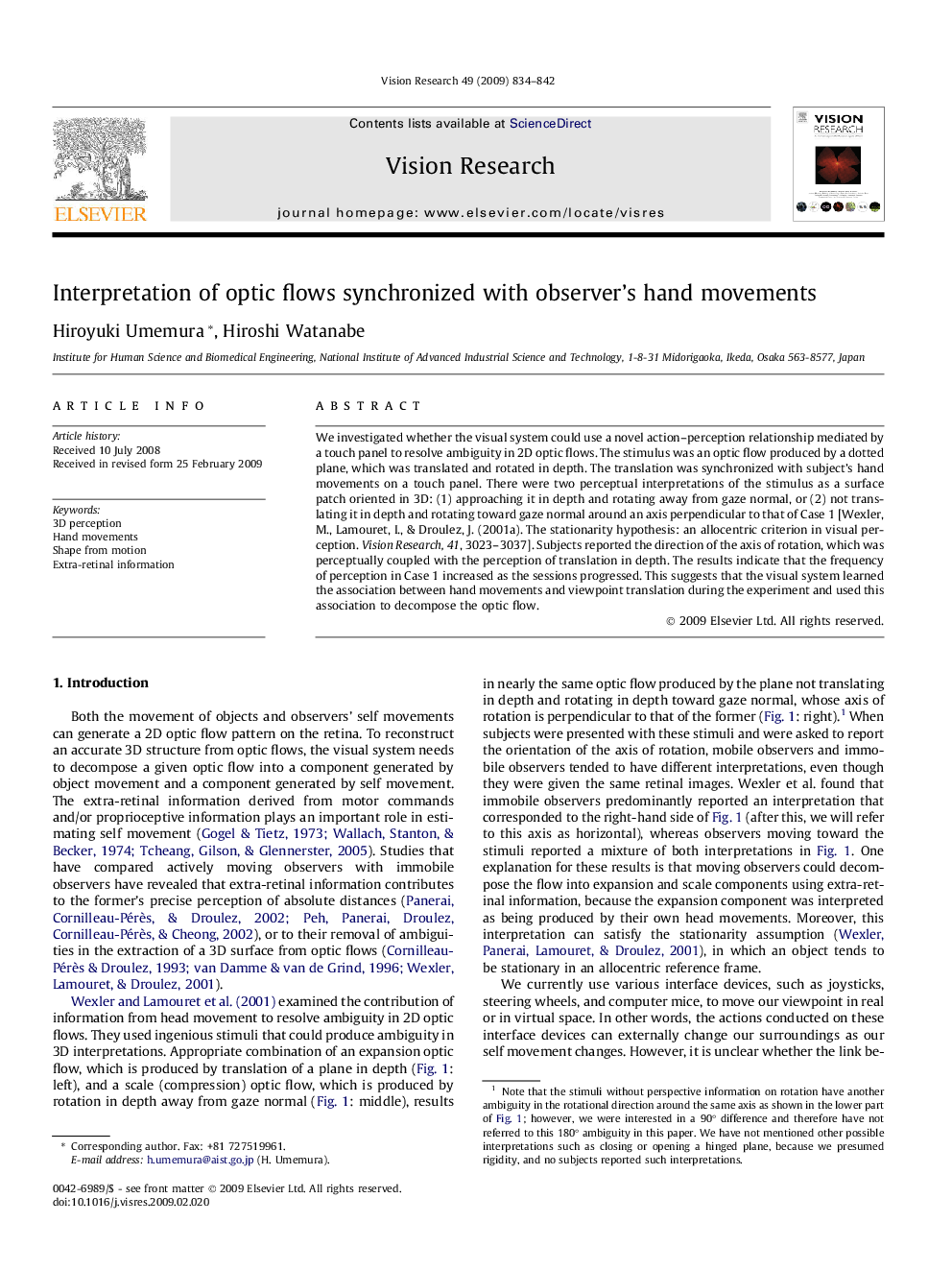| Article ID | Journal | Published Year | Pages | File Type |
|---|---|---|---|---|
| 4034795 | Vision Research | 2009 | 9 Pages |
We investigated whether the visual system could use a novel action–perception relationship mediated by a touch panel to resolve ambiguity in 2D optic flows. The stimulus was an optic flow produced by a dotted plane, which was translated and rotated in depth. The translation was synchronized with subject’s hand movements on a touch panel. There were two perceptual interpretations of the stimulus as a surface patch oriented in 3D: (1) approaching it in depth and rotating away from gaze normal, or (2) not translating it in depth and rotating toward gaze normal around an axis perpendicular to that of Case 1 [Wexler, M., Lamouret, I., & Droulez, J. (2001a). The stationarity hypothesis: an allocentric criterion in visual perception. Vision Research, 41, 3023–3037]. Subjects reported the direction of the axis of rotation, which was perceptually coupled with the perception of translation in depth. The results indicate that the frequency of perception in Case 1 increased as the sessions progressed. This suggests that the visual system learned the association between hand movements and viewpoint translation during the experiment and used this association to decompose the optic flow.
